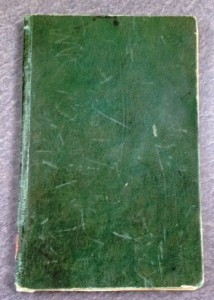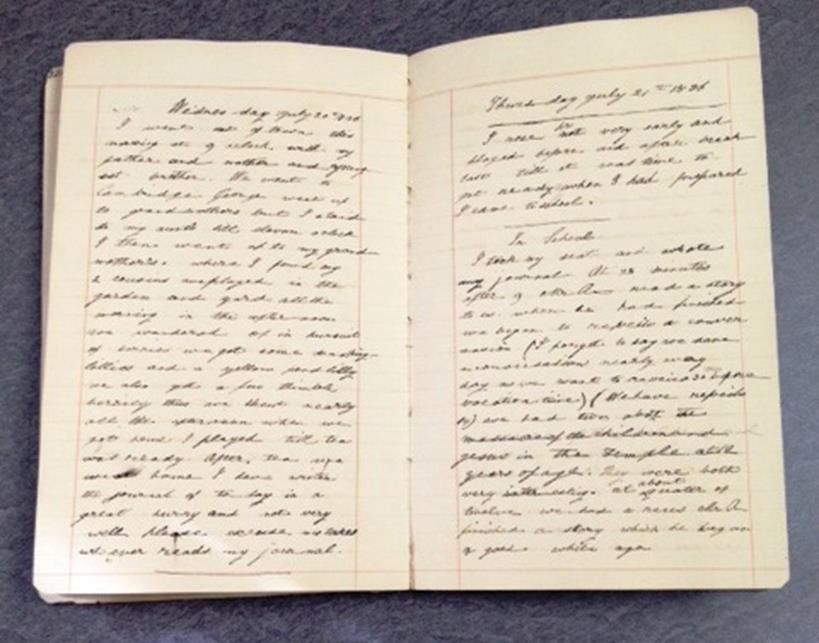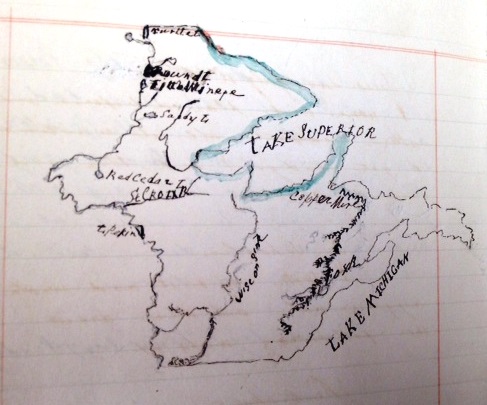
“Christmas won’t be Christmas without any presents,” grumbled Jo, lying on the rug.
“It’s so dreadful to be poor!” sighed Meg, looking down at her old dress.
“I don’t think it’s fair for some girls to have plenty of pretty things, and other girls nothing at all,” added little Amy, with an injured sniff.
“We’ve got Father and Mother, and each other,” said Beth contentedly from her corner.
So begins Louisa May Alcott’s novel, Little Women, whose opening lines have always stuck in many readers’ minds, including my own. When reading Little Women as a young man, I was unaware that I would one day find a manuscript that mentions her controversial father, Bronson Alcott, who was a teacher, philosopher, and creator of the Temple School in Boston, Massachusetts, in the early nineteenth century. As a researcher at NEHGS, I often delve into the various manuscripts available in our R. Avery Stanton Special Collections. The document mentioned above is the diary of nine-year-old Martha Anne Kuhn, who kept a journal during the summer of 1836. This diary is a fascinating glimpse into history and what life was like for a small girl at that time, including her time at Bronson Alcott’s school and her family’s travel from Boston to Albany, New York, and back to Boston.
Martha and her family lived at 66 Beacon Street in Boston. Her father was George H. Kuhn, who was “one of the most prominent business men of that city, who filled many positions of trust, and served in both branches of the Legislature.”[1] Martha Anne Kuhn married Samuel Greely Clarke, who was a First Scholar at Harvard University in 1851 and studied law with Daniel Webster’s office. Martha died in 1891. The diary was given to the Society in March of 1954 by an NEHGS member from Wellesley Hills. It is a small, green diary, written in easily legible cursive. Here are some unaltered excerpts from Martha Anne Kuhn’s 1836 diary:
Tuesday, July 5th, 1836
I rose rather late and played till breakfast was ready…. I then shelled peas for mother till half-past. I then prepared for School.
In School I took my seat and wrote my old journal through and wrote part of a copy. I then carried my book to Mr. Alcott and he looked at it and gave me this one to write in. So I wrote a little while in it and then drew a map of the North West territory. I shall have to draw it on the next pages as I am going to write the description of it first.
The North West territory lies between Lake Michigan and the Mississippi …. It is chiefly inhabited by Indians and little known peoples …. After I had studied the lesson we recited it and then had a reces. After reces Mr. Greater did not come so Mr. Alcott was going to read to us.
The series continues here.
[1] Clarke, George Kuhn. Genealogy of the Descendants of Nathanial Clarke of Newbury, Mass. (T.R. Marvin & Son, Press, Boston, 1883), pg. 36.


I happened to stop at the Needham Library a few years back and they had a collection of Civil War diaries. They were fascinating to read as they went from day to day,even the weather was included.
The fact that they celebrated Christmas at all was unusual in the Puritan based culture that the girls were exposed to in Boston. Even today some of the traditional Congregational Churches in the Connecticut River Valley in Connecticut , consider Christmas to “worldly to be observed”.
Just read Marmee & Louisa by Eve LaPlante this winter so this excerpt was a treat. On another note, I am surprised to hear that Congregational Churches in the Connecticut River Valley do not celebrate Christmas. I was brought up in the Second Congregational Church in Middletown and Christmas was celebrated and it also was celebrated at the First Congregational Church in Middletown and every other one that I knew of. This was in the 1950s to 1970s. My grandmother taught Sunday School at Congregational Churches for over 50 years (from the 30s to the 60s in West Haven, Connecticut) and they celebrated Christmas (she died in 1991 at over 100 years of age). I am curious, what churches are you referring to?
Farmington’s First Parish in the 2000’s . The Parish as well had difficulty with any display of a Christian Cross. Harriet Beecher Stow did not celebrate Christmas until she began attending Trinity Episcopal Church, Hartford in the 1900’s.
Both the Calvinistic doctrine of accepting no religious holiday other than the “Sabbath” and Harriet Beecher Stow’s affinity with the Episcopal Church is documented in — http://www.episcopalarchives.org/cgi-bin/the_living_church/TLCarticle.pl?volume=222&issue=20&article_id=1